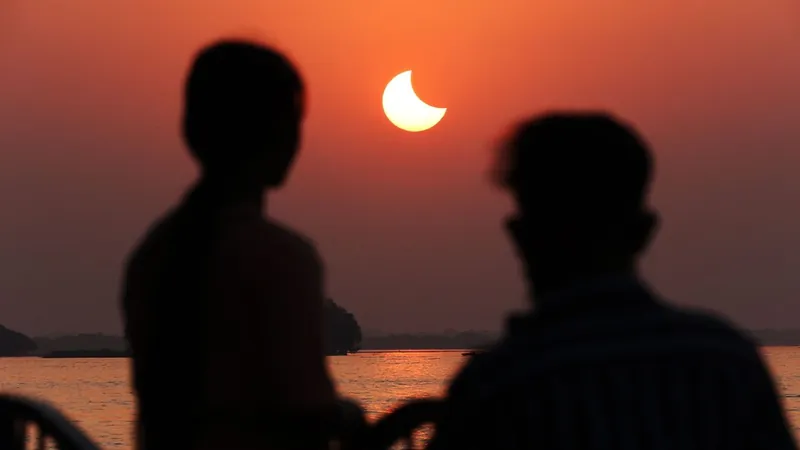
Don't Miss the Spectacular 'Devil Horns' Solar Eclipse – Here's How to Watch It Live for Free!
2025-03-27
Author: Daniel
Excitement is building as the much-anticipated solar eclipse approaches on Saturday, March 29! Early risers in 13 U.S. states and much of northeastern Canada will witness a breathtaking sight – the sun partially covered by the new moon, creating an enchanting visual effect that resembles “devil’s horns.” With up to 93% of the sun’s surface obscured, this rare phenomenon promises to be a treat for millions eager to catch a glimpse.
Live Stream Details: Watch the 'Devil Horns' Eclipse!
For those not positioned directly in the path of the eclipse or lacking protective eyewear, fret not! Several free online live streams will broadcast this remarkable event, allowing you to experience the magic from the comfort of your own home. Various platforms, including Timeanddate.com and the Royal Observatory Greenwich, will offer multiple angles and insights into the eclipse.
Key Viewing Times Across North America
Tune in to Timeanddate’s stream at 5:30 a.m. EDT to witness the partial eclipse unfold from various locations. With the most breathtaking views emanating from St. John's in Newfoundland and Labrador, viewers can expect to see the iconic “devil’s horns” peak around 7:53 a.m. EDT. At this moment, approximately 82% of the solar disk will be obscured! The partial eclipse will gracefully conclude an hour later, so make sure to have your coffee ready as you prepare for this stunning celestial display.
International Perspectives on the Eclipse
Timeanddate's streaming service will also provide a feast for the eyes from across the Atlantic. Viewers can expect to see footage from Italy's Siena, where only about 5% of the sun will be obscured at noon local time. Additionally, experience vantage points from Norway, featuring towns like Kristiansand and Skibotn, with obscuration rates of 30% and 37%, respectively. In the U.K., the Royal Observatory Greenwich will share a unique live feed peaking at about 40% coverage around 11:03 a.m. local time.
Safety First: The Importance of Protective Eyewear
If you're lucky enough to be in a location where the eclipse is visible, remember that safety comes first! According to NASA, you must wear certified solar eclipse glasses or use a telescope equipped with solar filters while observing the event directly. With this eclipse being a partial one, there will be no window of totality to safely remove your glasses.
Looking Ahead: Future Eclipses to Watch For!
Excitingly, the solar eclipse on March 29 will only be the beginning. Mark your calendars for the next partial solar eclipse visible from North America, set to occur on August 12, 2026. While this event will be a total eclipse in regions like Spain, Iceland, Greenland, and parts of Portugal, those in North America can still enjoy a captivating spectacle!
So get ready, grab your eclipse glasses, and prepare to be awed by the wonders of our universe. Don’t miss your chance to experience the magical 'devil horns' eclipse!




 Brasil (PT)
Brasil (PT)
 Canada (EN)
Canada (EN)
 Chile (ES)
Chile (ES)
 Česko (CS)
Česko (CS)
 대한민국 (KO)
대한민국 (KO)
 España (ES)
España (ES)
 France (FR)
France (FR)
 Hong Kong (EN)
Hong Kong (EN)
 Italia (IT)
Italia (IT)
 日本 (JA)
日本 (JA)
 Magyarország (HU)
Magyarország (HU)
 Norge (NO)
Norge (NO)
 Polska (PL)
Polska (PL)
 Schweiz (DE)
Schweiz (DE)
 Singapore (EN)
Singapore (EN)
 Sverige (SV)
Sverige (SV)
 Suomi (FI)
Suomi (FI)
 Türkiye (TR)
Türkiye (TR)
 الإمارات العربية المتحدة (AR)
الإمارات العربية المتحدة (AR)